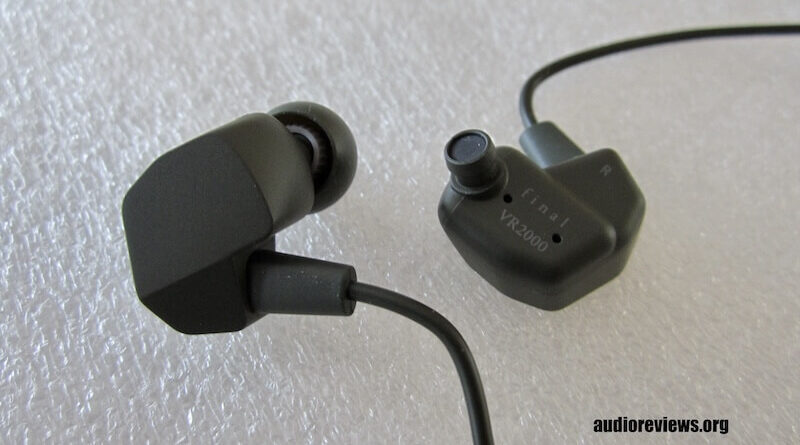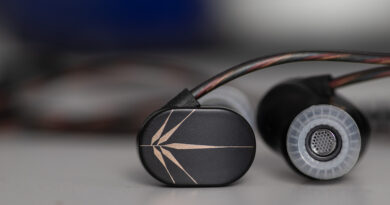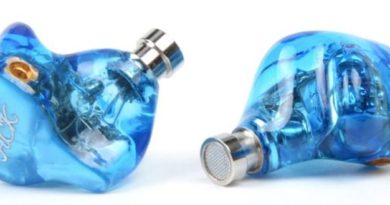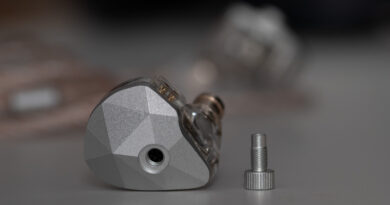final VR2000 For Gaming IEM Review – Across The Universe
The £58.99 final VR2000 is the mid-priced model in the company’s Virtual Reality series. It is perfect for gaming and binaural listening owing to its speedy driver and non-fatiguing tonality that includes good extensions on both ends of the frequency spectrum.
The final VR2000 was provided by Jackrabbit Media for my review – and I thank them for that. You can get them from hifiheadphones in the UK, and from diverse amazon marketplaces.
PROS
- Great sound, speedy driver
- Very good spatial reconstruction
- Light earpieces, good fit
- Probably best of final’s VR series
CONS
- Fixed cable
- 120 cm cable length rel. short for desktop use
Table of Contents
Introduction
The binaural (“two ears”) recording technology was developed in early 1970s Germany as “Kunstkopf Stereophonie”, designed for radio plays. It is a recording method to exactly reproduce the natural hearing process and enable maximally realistic recordings.
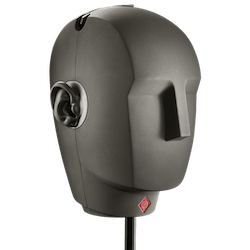
A dummy head (“Kunstkopf”) made of wood or plastic, with microphones placed in both ears, was used for recording scenes and sounds the same way as the human ear perceives them. The artificial head was a silent participant in the scene registering everything around it
When played back with (preferably open-back) headphones, the listener takes the position of the dummy head and moves into the centre of the acoustic action. He/she is totally immersed in sound. In contrast, in stereophonics (as we know it), the listener is in front of the scene.
Binaural recordings enable spatial hearing, they give the listener an accurate sense of distance and space, including up and down, and back and forth. Yes, one can hear sounds from behind of above one’s head. Picture a mosquito flying several times around you. Only possible with binaural.
The binaural soundstage can be infinitely large. A fantastic experiment of space, sound, and illusion. The effects suggest to the listener that they are in a different place, a different time and in a different environment…compare 3D virtual reality glasses.

Since binaural productions were rather expensive and headphones inconvenient for the masses at the time (compare to the more recent 3D TVs with glasses), the binaural technique went into hibernation after only a few years…in order to resurge with the rise of increasingly refined video games, Dolby Atmos, and surround sound as well as the widespread availability of headphones and lower recording costs.
Today’s gamers typically use full-sized, frequently illuminated headphones with an attached mic in front their noses, reminiscent of helicopter pilots or Super Bowl coaches. Most of these phones exaggerate the game’s sounds with unnaturally strong bass (for explosions…) and razor sharp treble (for definition). This window dressing may appeal to kids but the more mature gamer has higher expectations such as realistic reproduction of the scenes in the ever more realistic video soundscapes.
What is needed is accurate production of 3D simulated sounds with great realism, separation of overlapping effects, great sense of space and distance, and enough speed for the player to react fast, all that without getting fatigued over time. The results are similar to binaural recordings. That’s what final’s VR series, consisting of 3 models, is all about.
The VR3000 was introduced in late 2020, the VR3000 in late 2023, and the budget VR500 in early 2024. I willl analyze all of them but start with the VR2000, as it appears to be the best of the series.
IEMs for Gaming? What to expect!
Think about it. What gamers want is clarity, separation of sounds, and perfect imaging, giving them the opportunity to pinpoint locations and distances in 3D space — and the chance to react fast for maximum success. Time can be money also in gaming gaming. A speedy driver is needed.
On the one hand, you want a robust bass as a solid sonic foundation, but it should not bleed into the midrange. This is achieved by a slightly faster note decay compared to regular earphones. The danger is too fast a decay that would create a sterile, unnatural sound.
Hitting the right balance between speed and decay also works for note separation in the midrange. You get a good accentuation and articulation by slightly leaner notes. What has to be avoided is artificial sharpness that would lead to fatigue. Gamers love long playing sessions.
So what did final do to achieve this? And what else do they have up their sleeves?
Specifications final VR2000
| Housing: ABS Driver: Dynamic driver Cable: OFC black cable, fixed Sensitivity: 101dB/mW Impedance: 18 Ω Weight: 20 g Cord length: 1.2 m Tested at: ¥6,980/£58.99 final VR series: snext-final.com final VR2000/3000: snext-final.com Product Page 1: snext-final.com Product Page 2: next-final.com |
Physicals
The company designed a new 6 mm dynamic driver ( “F-Core Du”) with new diaphragm, voice coil, magnet, and magnetic circuit. They use sturdier brass instead of aluminium. Their voice coil was designed to minimize time response. You find more info on the VR2000’s product page.
Optically and haptically, the VR2000’s earpieces appear like any of final’s A-series with the difference that the cable is fixed and there is a 3-button remote with microphone on the right-hand side. In the box are ear hooks for improved hold, a textile storage bag, and 5 pairs of the famous final E-series eartips.
The microphone’s quality is average. Here are two sound samples recorded in rooms with different acoustic properties:
The earpieces are light and relatively small, they may have the shape of a stealth bomber, but they are very comfortable over long listening sessions.
The iem design must be meant for portable devices such as phones, tablets, or notebooks. At a standard 120 cm cable length for iems, it may be a bit short for use with a desktop stack.
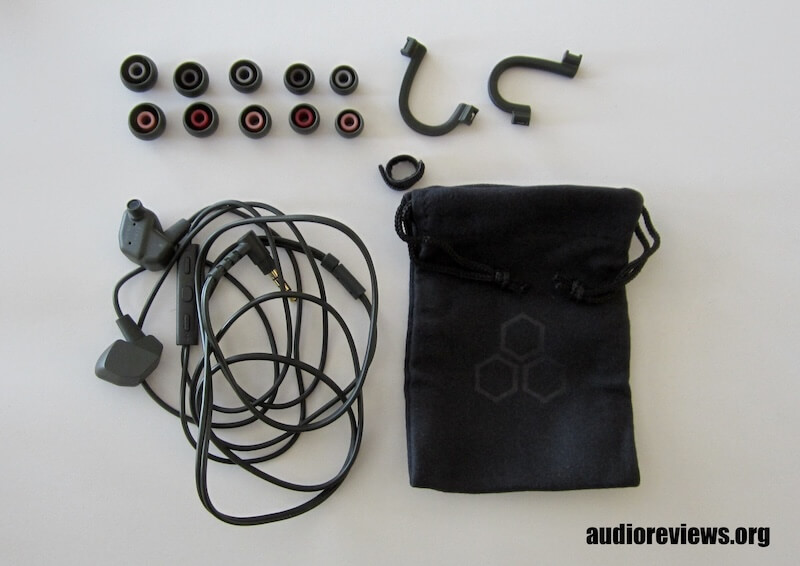
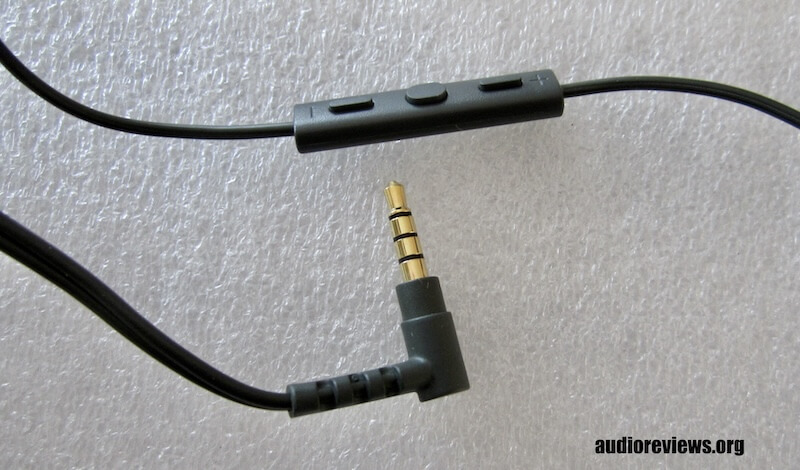
Tonality and Technicalities
The final VR2000 has a gently u-shaped sound with an emphasis on sub bass and lower treble, and a generous upper treble extension. Considering the swift driver, this leads to a relative accurate imaging of artificially generated sounds along the whole frequency range.
The relatively fast note decay serves the separation and positioning of overlapping sounds, making for a great imaging. Players and machines are accurately positioned in space, sometimes to the point that the realism is creepy to my ears.
For example, sub bass sounds in a computer game do not smudge at all into the mid range. Similarly, the VR2000 pick out the subtlest space sounds in the upper treble.
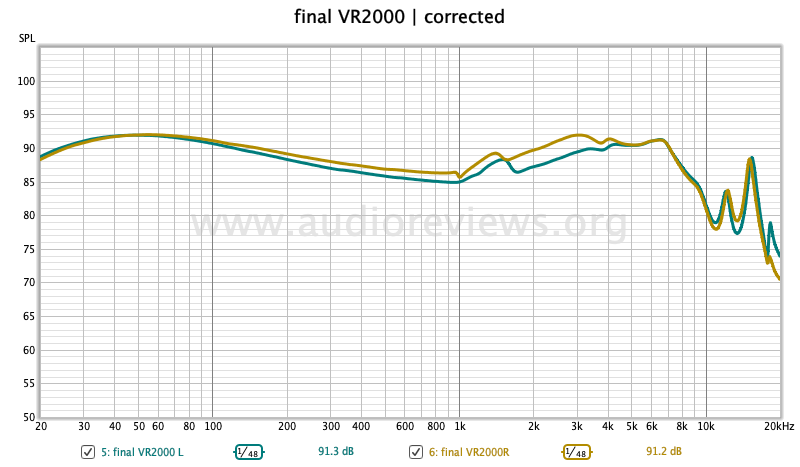
As a downside, “regular” music such as a string trio may sound a bit lean and scratchy. Similarly, lower-midrange voices can come across as a bit lean. Despite the upper midrange reinforcement, I never found the VR2000 unpleasant of fatiguing (and I am very sensitive to that), as it is obviously balanced by the sub bass….after all, the human ear hears the whole frequency spectrum in context.
When listening to binaural radio plays, the sound stage actually goes towards infinite in all directions. With the VR2000, virtual reality becomes reality, virtually (excuse the pun).
What the VR2000 does not deliver is a thick, fat sound, its goal is accuracy in a 3D space. If you want a thicker sound, you can opt for the final VR3000 (review pending).
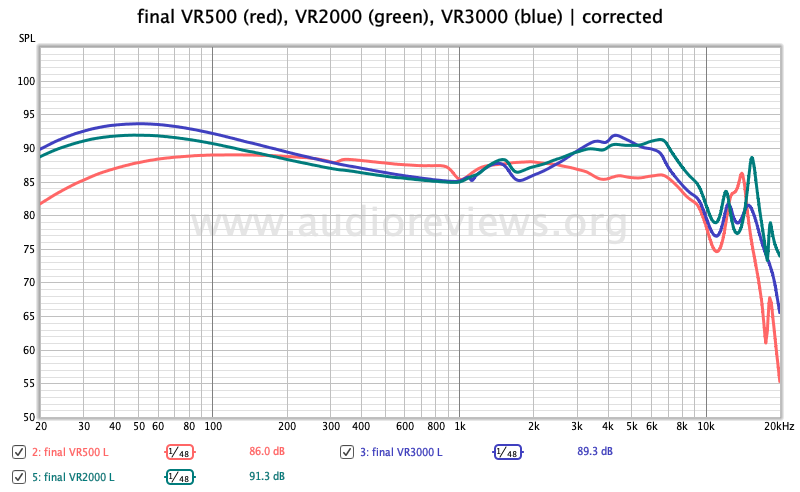
VR2000 Compared
I will dedicate my next reviews to the VR3000 and VR500 of final’s Virtual Reality Series. In short, the more expensive VR3000 have a thicker sound owing to a slower driver response with a less extended treble. It is probably better suited for general spoken word applications such as radio plays and podcasts, but not as speedy in games as the VR2000. The VR500 is the series’ budget model with a leaner, less bassy presentation than the other two.
Concluding Remarks
The final VR2000 is an excellent iem for gaming and binaural listening. It is likely most users’ favourite of final Audio’s Virtual Reality series. You will be hard pushed to find a better option elsewhere. It is as simple as that. And the price is right, too.
Until next time…keep on listening!




